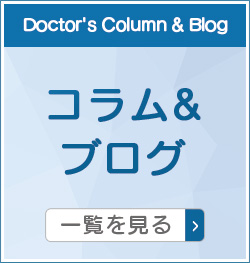昨年の3月にウィーンで開催された第1回の線維筋痛症の国際学会に参加してきましたが、残念なことに日本人医師は私一人でした。第2回の今年は、Covid-19パンデミックのため延期に加えてバーチャルでの開催となりました。
招待演者の他に、一般演者の口演サマリーが添付されていました。その最初の演題は、線維筋痛症患者では、ちょうど起立性調節障害(起立性低血圧症)に類似した血行動態が記録されているようです。
ちなみに、起立性調節障害とは、思春期前後に発症し易い中枢性自律神経機能不全症、遺伝素因と思春期特有の自律神経変調に加えて、心理社会的因子(親子関係、学校のトラブルなど)が関与して増悪する心身症です。この発表は、線維筋痛症が循環器心身症としての特徴を有することを示唆するものであるといえるでしょう。起立時の循環調節障害による脳や全身臓器への血流不全から、立ちくらみ、倦怠感、失神、頭痛、動悸などを起こします。
起立性調節障害の診断のためには起立血圧試験(シェロング試験)が用いられますが、この報告で用いられた手法も、これに準じるものです。
O-01 BLUNTED CARDIOVASCULAR RESPONSES TO ORTHOSTATIC AND CLINOSTATIC POSTURE CHANGES IN FIBROMYALGIA: FURTHER EVIDENCE OF A UTONOMIC ABNORMALITIES IN THE DISORDER Ana M. Contreras-Merino1 , Dmitry M. Davydov2 , Gustavo A. Reyes del Paso1 1 Department of Psychology, Faculty of Humanities and Education Sciences, University of Jaen, Spain; 2 Laboratory of Neuroimmunopathology, Institute of General Pathology and Pathophysiology, Russian Academy of Sciences, Russia.
Background. Fibromyalgia is associated with autonomic nervous system abnormalities. At the cardiovascular level, some studies have found reduced heart rate reactivity to psychological and physical stressors, including tilt maneuvers.
Objectives. To evaluate the temporal dynamics of short-term beat-to-beat cardiovascular responses to orthostatic and clinostatic postural changes in fibromyalgia patients.
Methods. Heart rate, systolic and diastolic blood pressure, and total peripheral resistance were derived using electrocardiography, impedance cardiography, and continuous beat-to-beat blood pressure recordings in 47 fibromyalgia patients and 37 healthy controls. The procedure included: (1) a 5-minute baseline in a sitting position; (2) 1 minute standing (first orthostatic phase); (3) 5 minutes lying down (clinostatic phase); (4) 5 minutes standing (second orthostatic phase). Differential second-by-second scores (with respect to baseline means) were obtained from the 30 first seconds of each phase.
Results. Interactions Group x Seconds indicated reduced increases in heart rate and cardiac output during the standing phases and reduced decreases in heart rate during the lying phases in fibromyalgia patients in comparison with healthy participants. Averaged diastolic arterial pressure was greater during standing, and systolic arterial pressure and peripheral total resistance were greater during lying in fibromyalgia than controls, while mean arterial pressure was greater both during standing and lying in fibromyalgia in comparison with healthy individuals.
Conclusions. Further evidence of blunted autonomic responses to physical stressors was observed, supporting the existence of autonomic dysregulations in fibromyalgia. The inclusion of continuous measures may provide information about the time dynamics and delayed adaptation periods in this disorder.
O-01 線維筋痛症における胸部および臨床状態の変化に対する鈍化した心血管系の反応:この障害における生理的緊張状態が異常となるさらなる証拠
飯嶋註:
原文ではutonomic という語が用いられていますがeutonomic(正常緊張状態の)に相当するものであろうと推測します。
Ana M. Contreras-Merino1 , Dmitry M. Davydov2 , Gustavo A. Reyes del Paso1 1 Department of Psychic Faculty of Humanities and Education Sciences University Jaen; 2 Laboratory of Neuroimmununathology Academy Academy Academy General Pathology and Pathophysiology. Reyes del Paso1 1 スペイン、ハエン大学人文・教育科学部心理学科、2 ロシア科学アカデミー総合病理・病態生理学研究所神経免疫病理学研究室。
背景。
線維筋痛症は自律神経系の異常と関連している。心血管レベルでは、いくつかの研究では、傾斜操作を含む心理的・物理的ストレス要因に対する心拍数反応性の低下が認められている。
目的。
線維筋痛症患者における起立姿勢および傾斜回転的姿勢の変化に対する短期的な心血管反応の時間的動態を評価する。
方法。線維筋痛症患者47名と健常対照者37名を対象に、心拍数、収縮期血圧、拡張期血圧、総末梢抵抗を心電図、インピーダンス心電図、連続拍間血圧記録を用いて算出した。
手順は以下の通りであった。(1)座位で5分間のベースライン、(2)1分間の起立(第1起立期)、(3)5分間の横臥(傾斜回転期)、(4)5分間の起立(第2起立期)。各相の最初の30秒から1秒ごとのスコアの差(ベースラインの平均値に対する)が得られた。
結果。
相互作用群対Secondsは、健常者と比較して線維筋痛症患者において、立位相の間の心拍数および心拍出量の増加が減少し、臥位相での心拍数の減少率が低下したことを示した。線維筋痛症患者では対照群に比べて横臥時に起立時と比べて平均拡張期動脈圧、収縮期動脈圧と末梢抵抗は高く、線維筋痛症患者では健常者と比較して起立時と横臥時の両方で平均動脈圧が高かった。
結論。
身体的ストレス因子に対する自律神経反応の鈍化のさらなる証拠が観察され、線維筋痛症における自律神経失調症の存在を支持した。連続的な測定法を含めることで、この障害における時間的ダイナミクスと適応期間の遅延についての情報が得られるかもしれない。
ARCHIVE
- 2024年4月
- 2024年3月
- 2024年2月
- 2024年1月
- 2023年12月
- 2023年11月
- 2023年9月
- 2023年7月
- 2023年5月
- 2023年4月
- 2023年1月
- 2022年12月
- 2022年11月
- 2022年9月
- 2022年7月
- 2022年6月
- 2022年5月
- 2022年4月
- 2022年3月
- 2022年2月
- 2022年1月
- 2021年12月
- 2021年11月
- 2021年10月
- 2021年9月
- 2021年8月
- 2021年7月
- 2021年6月
- 2021年5月
- 2021年4月
- 2021年3月
- 2021年2月
- 2021年1月
- 2020年12月
- 2020年11月
- 2020年10月
- 2020年9月
- 2020年8月
- 2020年7月
- 2020年6月
- 2020年5月
- 2020年4月
- 2020年3月
- 2020年2月
- 2020年1月
- 2019年12月
- 2019年11月
- 2019年10月
- 2019年9月
- 2019年8月
- 2019年7月
- 2019年6月
- 2019年5月
- 2019年4月
- 2019年3月
- 2019年2月
- 2019年1月
- 2018年12月
- 2018年11月
- 2018年10月
- 2018年9月
- 2018年8月
- 2018年7月
- 2018年6月
- 2018年5月
- 2018年4月
- 2018年3月
- 2018年2月
- 2018年1月
- 2017年12月
- 2017年11月
- 2017年10月
- 2017年9月
- 2017年8月
- 2017年7月
- 2017年6月
- 2017年5月
- 2017年4月
- 2017年3月
- 2017年2月
- 2017年1月
- 2016年12月
- 2016年11月
- 2016年10月
- 2016年9月
- 2016年8月
- 2016年7月
- 2016年6月
- 2016年5月
- 2016年4月
- 2016年3月
- 2016年2月
- 2016年1月
- 2015年12月













